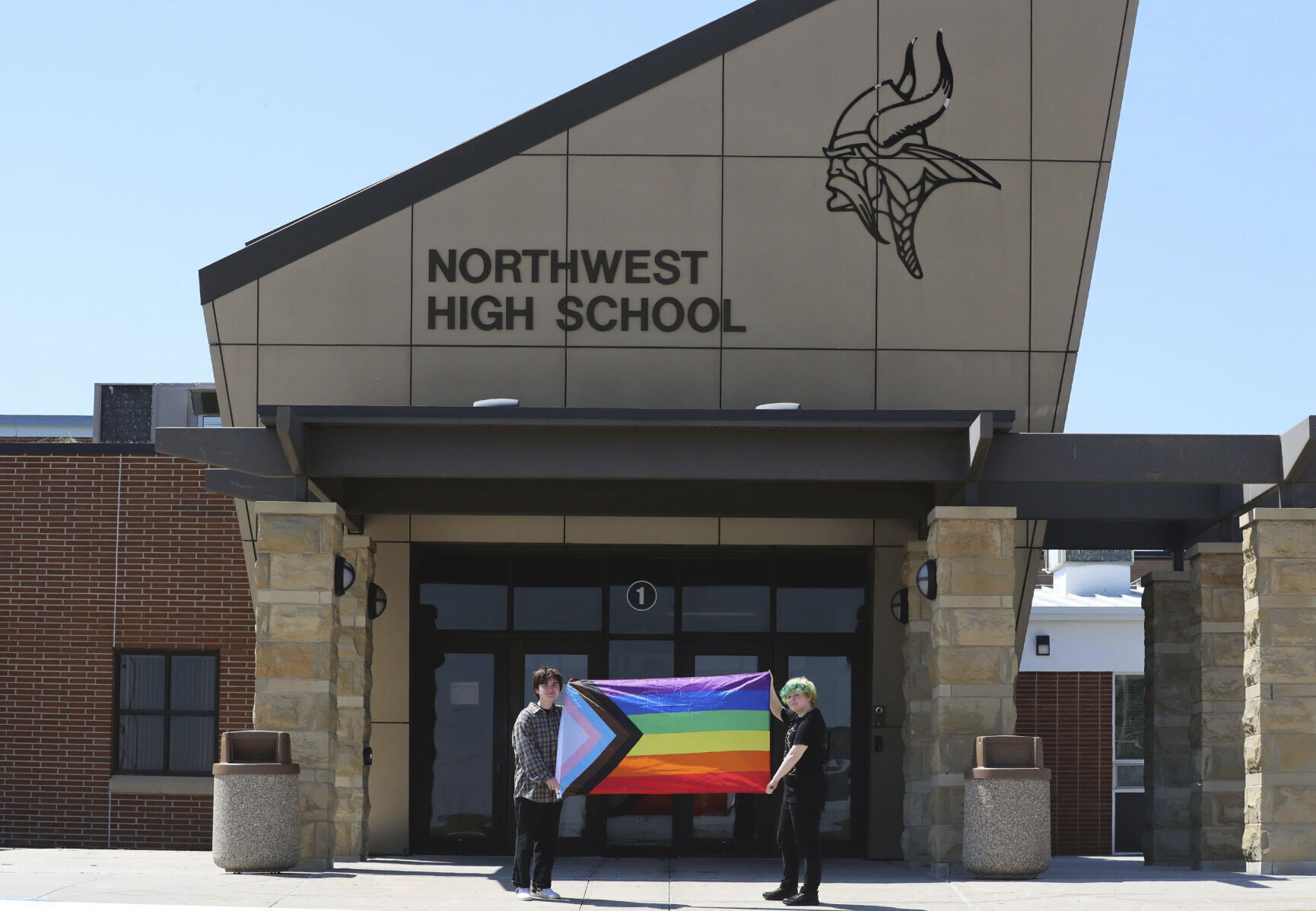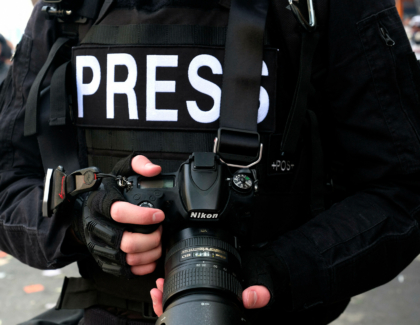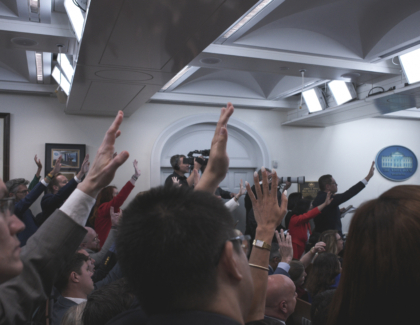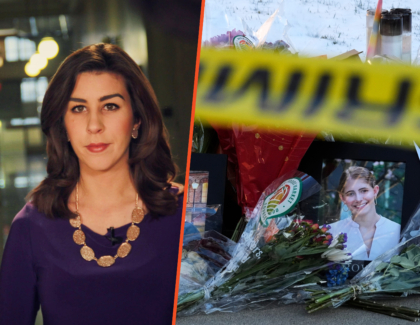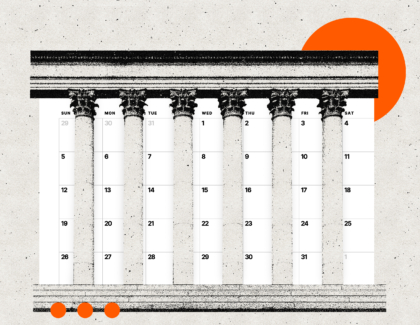Sign up for the daily CJR newsletter.
Ten days ago, a public-records request came to light involving the Columbia Missourian, a newspaper that is affiliated with the University of Missouri and staffed by students in its journalism school, and Eric Schmitt, the state’s attorney general and Trump-endorsed (well, kinda) Republican candidate for US Senate. Routine enough—except for the fact that it was Schmitt who requested records related to the Missourian, not the other way around. Journalists are not typically required to show their work under freedom-of-information laws, but the University of Missouri is public, and so some of the Missourian’s records are, too.
In his request—which was filed in June, a few weeks before his Senate primary—Schmitt asked to see correspondence between Mike Jenner and Tom Warhover, two professors who have worked with the Missourian, and the executive director of PolitiFact, which partnered with the professors on a class that tasked student journalists with compiling fact checks related to Missouri politics for publication in the Missourian. It’s not totally clear why Schmitt wants to see the correspondence—the PolitiFact partnership hasn’t been active since 2020; even when it was, it covered Schmitt only once, and then to endorse a comment he made about the opioid crisis as “mostly true”—but some of the language in his request allows for an educated guess; he’s asked for messages containing phrases like “political speech” and “the future of political reporting.” The dean of Missouri’s journalism school suggested that it would comply with Schmitt’s request—“Sunshine is a good thing,” he said, “we’ve got to be responsive”—but the Missouri Press Association accused Schmitt of weaponizing laws that he’s supposed to administer on behalf of the public as a “battering ram” against student journalists. Nor is this the first time that Schmitt has requested records from an educational institution. Last year, he even sued a school district over documents related to “critical race theory,” a high-level academic framework that Republicans have recently weaponized as an all-purpose boogeyman.
ICYMI: The killing of Jeff German
The Schmitt case is bizarre in its particulars, but in one sense, it’s not so unusual: student journalists and publications, at various levels, have often faced battering rams before, and those have sometimes been shot through, of late, with culture-war animus. A troubling example came earlier this summer in Grand Island, Nebraska, where a public school district shuttered the Viking Saga, a long-running high school paper, after it published an issue dedicated to Pride Month and LGBTQ+ issues (including, ironically, censorship in public education). Students working for the paper, at least one of whom is transgender, had already been reprimanded for using their preferred names and pronouns. When a school staffer told the paper that it could no longer print, she reportedly said that it was because the school board and superintendent were “unhappy” with its editorial content; the superintendent denied censorship, insisting that the paper had only been “paused,” but two senior school board officials publicly criticized the Saga’s Pride issue, with one talking explicitly about wanting to “control” “inappropriate” content. (“There were editorials that were essentially, I guess what I would say, LGBTQ,” he said.) The Nebraska Press Association suggested that the school had violated its students’ First Amendment rights.
For students in public high schools, these rights are not unfettered: in 1988, the US Supreme Court ruled, in a case involving a Missouri high school that stripped articles on teen pregnancy and divorce from its student paper, that school-sponsored student media outlets are not necessarily public forums and that administrators can thus censor them. Any interventions must stem from “legitimate pedagogical concerns” and cannot amount to viewpoint discrimination, but these conditions can be slippery in practice, as Justice William Brennan wrote in a dissent at the time. The Student Press Law Center, an organization that supports student journalists (and maintains a handy guide to the application of the 1988 decision), notes that the court’s decision “dramatically changed the balance of student press rights.” At some schools, censorship has since “become standard,” the group writes, and elsewhere, it is a threat.
Threats to high school journalism, then, are far from new. The same may be said for journalism at public colleges, even though the 1988 decision has (mostly) not been applied at that level—and private schools and colleges can set their own rules, beyond the reach of the First Amendment. As a glance at CJR’s archives suggests, college journalists have often faced at least attempted censorship over the years, with faculty advisers silencing or pushing out student editors, and administrators silencing or pushing out faculty advisers, as Zainab Sultan reported for CJR in 2019. Chris Evans, then the president of the College Media Association, told Sultan that reported cases of censorship, though numerous, likely constituted “the tip of the iceberg,” with many going unreported for fear of further reprisal. More recently, a survey by fire found that 60 percent of college papers face at least one instance of administrative censorship each year.
Recent years have nonetheless brought fresh challenges for student journalists—from broader Trumpian press threats and cries of “fake news” to particularly sharp instances of tension and attempted censorship related to students’ coverage of the fallout from #MeToo and the murder of George Floyd. (A lawyer for the Student Press Law Center told BuzzFeed in 2019 that the year after the #MeToo movement ignited was “the most challenging year of my professional career.”) Then came the pandemic, which simultaneously placed student journalists on the front lines of a vital story—what schools and colleges were doing, or not, to keep their students and staff safe—and further muddied the legal protections they enjoyed as the distinction between on- and off-campus blurred, as Jonathan Peters wrote for CJR in 2020. All the while, the broader local-news landscape in the US has continued to erode, placing a further burden on student journalists in some places to cover the community beyond their university gates. In May, a Pew survey found that 10 percent of statehouse reporters nationwide are student journalists working for a student publication or as an intern at a local outlet. That figure rose above 50 percent in two states: Missouri and Nebraska. Them again.
The Pew data points to the vital role that student journalists perform: they are, simply, journalists, both in the sense that they do journalism (which is an open democratic act, not a professional identity bestowed by third-party accreditors) and in the fact that, often, they are already working at the same level as their professional counterparts. They thus face the same challenges as other journalists, including—as Anne Wen and Mary Retta have recently documented for Teen Vogue—online harassment, lawsuits (though these are rare), and even subpoenas. In some ways, though, they are more vulnerable, finding themselves locked in uneven power balances with administrators (as I outlined above) and their professional counterparts, who, as Hannah Docter-Loeb recently wrote for The Objective, routinely crib their work without attribution. At the same time, we task student journalists, at least implicitly, with figuring out the future contours of a craft whose philosophical and representational shibboleths are up for grabs. Marissa Martinez, the first Black woman to lead the Daily Northwestern, told CJR in 2020 that “there is no precedent set by legacy papers on how to do this stuff, so we have to come up with innovative ways to make journalism more diverse and inclusive.”
Amid all these challenges, some opportunity is at hand, at least in some areas. Sixteen states—from Arkansas to Washington State—have laws guaranteeing student journalists greater protection against censorship, with the oldest taking effect in California in the seventies and the most recent passing in Hawai‘i earlier this year; many other states, meanwhile, have recently considered similar laws (an effort in Nebraska last year won majority support in the state’s legislature but fell short of overcoming a filibuster), as the New Voices movement, a student-driven campaign under the aegis of the Student Press Law Center, has sought to expand the map of student press protections. On a different note, the state of California last week awarded the journalism school at UC Berkeley twenty-five million dollars to administer a fellowship program that will pay students and graduates from Berkeley and other schools to report in underserved areas statewide—an allocation that the school believes is the largest a US state has ever invested in local journalism. The program “should generate great enthusiasm for student journalists across California looking to break into the field after they graduate,” a spokesperson for the state senator who pushed the idea told Berkeley’s Daily Californian newspaper.
The Berkeley program is a reminder of the porous boundary between student and professional journalism, and a reminder, too, that as officials in some states go after student publications (with public-records laws, for instance), officials elsewhere seem more inclined to be supportive. Again, though, threats to student journalism persist everywhere. In recent days, a major student press controversy has blown up in California, despite the generosity of its state lawmakers and relative strength of its student press laws. The Pearl Post, a high school paper in Los Angeles, reported months ago that a school librarian had refused to comply with a local covid vaccine mandate; the librarian asked the paper’s faculty adviser to remove her name from the story, claiming that it violated federal health-privacy regulations, but an attorney from the Student Press Law Center told the paper that it could leave the name in, so it did. The school’s headteacher also demanded that the librarian’s name be removed, however, and threatened to discipline the paper’s adviser if it wasn’t. Recently, the adviser was issued a three-day suspension. (She is appealing.)
The Pearl Post is named for the school where it operates, Daniel Pearl Magnet High School, which is itself named for Daniel Pearl, a Wall Street Journal reporter who was murdered by terrorists while reporting in Pakistan in the aftermath of 9/11 and was educated within the same school district. The school’s focus is on journalism and communications; on its website, it boasts about its “rigorous academics” and “award-winning student newspaper.” The irony has not been lost on observers. The Student Press Law Center’s executive director called it “mind boggling.”
Below, more on student journalism:
- “Student Journalists Reveal a Changing World. Let Them”: After the Viking Saga was shut down in Nebraska, Margaret Renkl, a contributing columnist at the New York Times, called the decision a “travesty” and pointed out that it was “only the latest episode in the increasing efforts to censor student publications across the red states, particularly when students are writing about LGBTQ issues.” The high school newspaper “is not the enemy of frightened adults,” Renkl wrote. “It is one of the few windows they will ever have into what is actually happening in their own children’s world, perhaps in their own children’s hearts. Isn’t that what a parent is supposed to want?”
- “Canceled”: Marcus Pennell, the student at the Nebraska school who was reprimanded for not using his birth name in the pages of the Viking Saga, also wrote about the episode, in a column for the Washington Post. “Changing my name wasn’t supposed to be a political statement. But our local school board has turned it into one,” Pennell wrote. “Policies that block our ability to write on LGBTQ topics or publish stories that humanize LGBTQ peers only serve to create a more hostile educational environment,” Pennell added. “Being bullied by peers is one thing. But to be punished by the people who are supposed to be protecting your constitutional right to an education is despicable.”
- Harassment: Last month, Jody Santos, Meg Heckman, and Myojung Chung, journalism professors at Northeastern University, published new research finding that female journalism students of color are more likely to face “violent, sexualized harassment” in their work. “The main takeaway is that student journalists are not practicing journalism in some idyllic, parallel universe where they’re insulated from the challenges that professional journalists out of college face,” Heckman said. “One of those problems is unfortunately anti-press harassment, and journalism educators need to do a better job of acknowledging that and preparing students to deal with it as much as they can.”
- Media literacy: Recently, Tiffany Hsu, of the Times, checked in with teachers who are doubling down on media-literacy education. “With young people spending more time online, where misleading and false narratives swirl around the upcoming midterm elections, the Covid-19 pandemic and other topics, educators are increasingly trying to offer protection,” Hsu wrote. “Using techniques updated for the digital age, they are teaching students that virality does not confer legitimacy.” (ICYMI, CJR’s Alexandria Neason wrote about a media-literacy program in the Hamptons in 2019.)
Other notable stories:
- Many unionized staffers at the Times will continue to work remotely this week, even though bosses want them back in the office; the paper handed out branded lunch boxes to welcome staff back, but its union said it would rather have “respect and a fair contract, without delay.” In related news, Condé Nast agreed to recognize a companywide union. And a major newspaper strike in the UK was called off after the death of the queen.
- In media-jobs news, Brian Stelter, who was ousted from CNN last month, is taking up a fellowship at Harvard’s Shorenstein Center, where he’ll convene “a series of discussions about threats to democracy and the range of potential responses from the news media.” Elsewhere, Shira Ovide, a tech columnist at the Times, is joining the Post as the paper expands its own tech coverage. And yesterday was Jen Psaki’s first day at MSNBC.
- After acquiring the subscription sports site The Athletic earlier this year, the Times has introduced ads there, Sara Fischer writes for Axios—part of the paper’s broader plan to “aggressively expand its advertising business across its bundled products, like games and sports.” The Times hopes that ad revenue will help The Athletic turn a profit by 2025, as the site also works to expand its coverage into women’s sports and F1.
- The Navy and a military court have refused to make public swaths of records in the case of a sailor who stands accused of setting a fire that destroyed a ship in 2020, Megan Rose reports for ProPublica, which is trying to pry the records loose. The official secrecy in the case would appear to fly in the face of a 2016 law requiring the military to make court-martial documents as accessible as those filed in normal federal court cases.
- A federal judge in Arizona sided with local news outlets in blocking a law that requires people filming police officers in public places to stay eight feet away. The judge invited state agencies to defend the law, but several—including the office of Arizona’s attorney general—have already declined to do so, and the judge suggested that the news outlets are “likely to succeed” in their argument that the law violates the First Amendment.
- IMI, a publisher owned by the brother of the president of the United Arab Emirates, ousted dozens of staffers at its newspaper Al Roeya, then dissolved the paper entirely after it ran a story about high gas prices, the AP’s Isabel DeBre reports. IMI said that it shuttered Al Roeya as part of a transition to launching an Arabic-language business outlet in partnership with CNN, but sources linked the turmoil to the prices story.
- European Union policymakers will this week present a set of proposals aimed at making it harder for big media companies to acquire smaller rivals, vetting such deals to ensure they respect pluralism and editorial independence. The proposals come amid “concerns about media freedom in Poland, Hungary, and Slovenia,” Foo Yun Chee reports for Reuters, and concerns that states are using ad spending to boost favorable coverage.
- And in the UK, several republican (with a small r) demonstrators appear to have been targeted by police for making routine anti-monarchy statements following the queen’s death. One man said that he was arrested for shouting “Who elected him?” at a gathering to mark the accession of King Charles III, while another was shoved by members of the public, then detained by police, after shouting “You’re a sick old man” at Prince Andrew.
ICYMI: Pomp and circumstance and the press
Has America ever needed a media defender more than now? Help us by joining CJR today.



